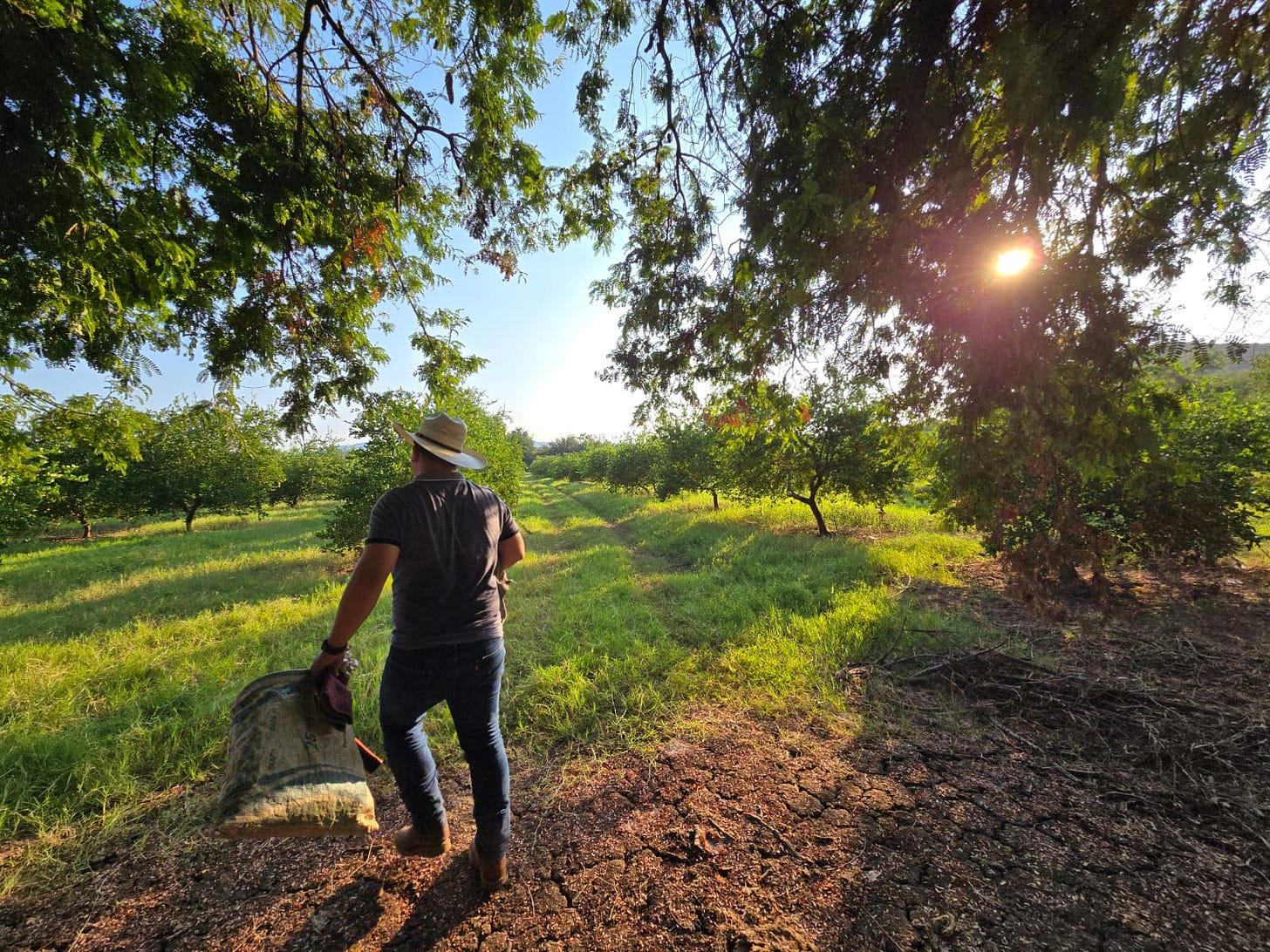Mexico's Cartel War Refugees
Mexicans flee from bullets and drone strikes; Jared Olson travels to a frontline of the conflict
Para leer en español click aqui.
CrashOut loves to find hard-hitting young journalists who are cutting their teeth reporting despite a punishing media environment. I’ve been following Jared Olson as he ventures into tough turfs in Mexico, Honduras and beyond to do real investigative reporting and flex his pen to tell the tales; I’m delighted to bring his dispatch from one of Mexico’s most beautiful and embattled corners. IG
By Jared Olson
I could see them once they stepped out of the store: two young men, almost teenagers, wearing bulletproof vests and wielding rifles, gunmen for a new splinter group dubbed El Cártel de la Virgen. “We need to go,” a local woman I am with mouths nervously, fumbling with her snacks and getting up. By the time we get to our car, the gunmen are parked in their spanking new Jeep right alongside us and one gets out to face us head-on.
It’s a glorious bluebird October afternoon in the Tierra Caliente of Michoacán, the Mexican state that runs from the Pacific through fertile hills towards the capital. I’ve come to Apatzingán, the rough-and-tumble town in the baking-hot, lime-producing heartland notorious for cartel warfare, as part of a running project to understand displacement due to violence. This afternoon I traveled with a carload of middle-aged, working class women with the “Pancho Villas” (or Frente Popular Francisco Villa), an activist group that is providing aid to some of the thousands who have fled their homes in the region. We wind up in a stunning mountaintop hamlet called Acahuato.
The youthful sicario watches us, wordless, as we approach, holding up an oily-black M60 machine gun with a box-magazine. “Hug me like you’re family, pretend you’re happy,” a Pancho Villa woman hisses to me under her breath, slinging her arm over my shoulder in a fake playful gesture.
The two-man comando, as locals refer to the street-level paramilitary units for cartels, studies us as we clamber into the vehicle, then follows us as we drive out of town before dropping away when we descend the mountain—now safe, the woman explains, laughing with a nervous release of adrenaline, as we crossed into the territory of a rival gang.
Gunmen like these have forced hundreds of thousands across Mexico to flee their homes, with the thugs unleashing murders, massacres, arson and now drone strikes. Some people run because they witness a killing, others because they don’t want to pay extortion, others because cartel squads want to take their land or clear areas of potential rivals. Those who take flight are often terrified to talk but over several trips I find people who describe their loved ones being slain and sicarios demanding money and seeing mutilated corpses on their dirt streets.
In legalese, those who flee their home but stay in their country are called “internally displaced” while those who run over a border are refugees or asylum seekers. According to the Internal Displacement Monitoring Center, 392,000 people have fled their homes within Mexico since 2008, though several NGOs and journalists believe that to be an undercount.
The Tierra Caliente, or Hot Land, of Michoacán is one of the worst areas for “desplazados,” battered by a forever war in which shifting cartels fight for the windfall riches from meth, cocaine and opioids as well shakedowns of avocado and lime growers, legal and illegal mines and logging. In the current phase, the Jalisco New Generation Cartel or CJNG (now designated by the State Department as a foreign terrorist organization) is at war with an alliance of gangsters known as the Cárteles Unidos (also designated as terrorists). This conflict is further complicated by squads of gunmen constantly breaking off and switching sides; the Cártel de la Virgen I ran into had recently flipped from Cárteles Unidos to the Jalisco mob.
Thousands have also fled Mexico’s cartel wars to apply for asylum in the United States, adding to a total backlog of 3.7 million cases in U.S. immigration courts that encompass people from Venezuela to Haiti to India. Mexico has one of the least successful rates for asylum with less than 17 percent of claimants winning refuge last year, compared to an 88-percent success rate for Afghanis. It’s yet to be seen if designating cartels as terrorists will make judges more sympathetic to those who say they are running from them.
A lot of the displaced are largely invisible, having just moved in with family or to other impoverished villages in the mountains, where they can face the same problems. Many more in the Tierra Caliente are thinking of fleeing especially since cartels have stepped up using drones jerry-rigged with homemade bombs.
“The children learn to hear the drones,” says Carmen Zepeda, a local leader of the Pancho Villas and town councilor for the governing Morena party. “They feel it in their blood. They get trauma…
Sorry folks, you need to subscribe to read the rest of the story. But it’s only the price of a cuppa coffee and you get the complete archive including exclusive interviews with cartel operatives and maps of cartel territory. And now is a great time to subscribe as we will be following these issues with detailed reports you can trust as big things break in the coming months.





